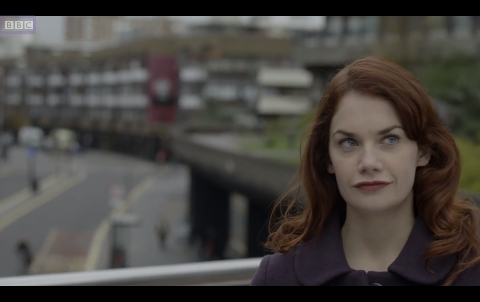In this clip of Casualty disability is represented in a stereotypical way, by representing the disabled character as not being able to do normal tasks with ease and contrasting his differences to normal people (people who aren't disabled). We are initially shown the man in the wheel chair; the mise-en-scene connotes differences between the characters, such as the attire worn by the man in a wheel chair for example, this shows that he is physically disabled indicating that he isn't capable of moving around on his own and that he has to have someone assist him around. The bright colour scheme of the shop contrasts with the man in the wheel chair as he's wearing bland, dull, brownish coat, this further marginalises his character and makes him look different to normal, this is obviously a metaphor for how disabled people typically feel out of place in society. The way he is dressed also contrasts with how is brother is dressed, his brother fully-able brother is dressed the opposite of him as his clothes consist of crisp colours as opposed to dull colours. I think this is also a metaphor as it show's the difference/contrast between a disabled person and a normal person.
The clip starts off with an over shoulder shot from Alex's perspective. The shot also takes his reduced height ,which due to his wheelchair, into account as the shot is taken from a low angle which looks upwards upon the other characters. This represents disability in an a-typical way as it shows a point of view from a disabled person's perspective, rather than that of a normal person. This places focus and importance on the disabled character and not the normal character which is unusual in media. Throughout the rest of the scene the filming is consistently done at an angle which looks upwards onto characters or the shot is filmed at Alex's head height. These abnormal camera angles represent disability as being abnormal and almost represents able people as being superior to disabled people.
The editing of the scene is subtle as it utilises continuity editing. The scene constantly flips back and fourth between different characters to show how they go about their day and to show not just one but several disabled people's point of view on day to day life. This is unusual in the media because disabled persons point of view on things is not typically the main focus in many TV shows/movies.
The editing of the scene is subtle as it utilises continuity editing. The scene constantly flips back and fourth between different characters to show how they go about their day and to show not just one but several disabled people's point of view on day to day life. This is unusual in the media because disabled persons point of view on things is not typically the main focus in many TV shows/movies.
The sound uses in this scene is mainly diegetic as there is no mood sound playing in the background, almost all of the sound used has a visible source on screen (e.g the voices of characters). In the beginning of the clip there is the diegetic sound of Christmas themed music playing in the shop coupled with the background noise of the shop e.g people talking.







